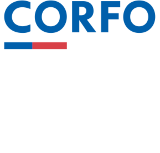Micro-targeted personalization represents the frontier of digital marketing precision, demanding not only a strategic understanding but also an exacting technical execution. This article unpacks the core challenges and actionable steps necessary to implement highly granular personalization systems that significantly boost user engagement and conversion rates. Building from the foundational concepts outlined in {tier1_anchor} and the broader context of {tier2_anchor}, we delve into the exact methodologies, tools, and pitfalls associated with technical deployment, ensuring you gain a comprehensive, expert-level understanding.
Table of Contents
- Understanding and Defining Micro-Targeted Personalization Criteria
- Data Collection and Management for Precision Personalization
- Building Dynamic Content Delivery Systems for Micro-Targeted Experiences
- Developing Rules and Algorithms for Micro-Targeted Personalization
- Practical Implementation: Step-by-Step Guide
- Troubleshooting Common Challenges in Micro-Targeted Personalization
- Case Studies and Best Practices
- Final Reinforcement: Delivering Value and Linking Back to Broader Context
Understanding and Defining Micro-Targeted Personalization Criteria
a) How to Identify High-Value Segments Within Your Audience Using Behavioral Data
To effectively micro-target, start by segmenting your audience based on behavioral signals that indicate purchase intent, engagement level, or loyalty potential. Use advanced analytics tools like Google Analytics 4 or Mixpanel to track detailed user actions such as product views, time spent on pages, cart additions, and repeat visits. Implement cohort analysis to identify patterns among high-value users. For example, segment users who have viewed a product multiple times over a week but haven’t purchased; these users are ripe for targeted interventions like personalized discounts or product recommendations.
| Behavioral Signal | Actionable Segmentation | Use Case Example |
|---|---|---|
| Multiple product views | Engaged shoppers | Show personalized product bundles or limited-time offers |
| Cart abandoners | High intent users | Send targeted cart recovery emails with personalized product recommendations |
b) How to Set Specific Personalization Goals Aligned with Business KPIs
Define clear, measurable objectives such as increasing conversion rates by a specific percentage, raising average order value, or improving engagement metrics like click-through rate (CTR). Use SMART criteria (Specific, Measurable, Achievable, Relevant, Time-bound) to set these goals. For example, aim to boost personalized product recommendations click-throughs by 15% within three months. Link these targets directly to your analytics dashboard, utilizing tools like Google Data Studio or Tableau for real-time tracking, ensuring that personalization initiatives are KPI-aligned and quantifiable.
c) What Data Points Are Critical for Micro-Targeting (e.g., Purchase History, Browsing Patterns, Contextual Signals)
Key data points for effective micro-targeting include:
- Purchase History: Specific products, categories, purchase frequency, and recency.
- Browsing Patterns: Pages viewed, time spent per page, scroll depth, and interaction points.
- Contextual Signals: Device type, geolocation, time of day, referral source, and current session behavior.
- User Attributes: Demographics, loyalty tier, subscription status.
- Engagement Triggers: Cart additions, wishlist activity, abandoned checkout events.
Combine these data points with real-time event tracking to construct a multidimensional user profile that supports precise personalization.
d) Common Pitfalls in Defining Segments and How to Avoid Them
Over-segmentation can lead to data sparsity, making it difficult to generate meaningful insights. Conversely, under-segmentation risks diluting personalization relevance. A common mistake is relying solely on demographic data without behavioral context. To avoid this, implement a balanced approach: define segments based on a combination of behavioral signals and attributes, and validate segment relevance through A/B testing. Regularly review segment performance metrics to ensure they remain actionable and aligned with evolving user behaviors.
Data Collection and Management for Precision Personalization
a) How to Implement Advanced Tracking Techniques (e.g., Event Tracking, Tag Management)
Leverage tag management solutions like Google Tag Manager (GTM) to deploy event trackers efficiently. Define custom events for specific user actions such as add_to_cart, product_view, or checkout_initiated. Use dataLayer objects to pass contextual information dynamically. For example, configure GTM to capture product IDs, categories, and user engagement levels with each event. Implement dynamic variables to adapt to different page types and user interactions, ensuring granular data capture applicable for micro-targeting.
Expert Tip: Use custom JavaScript variables within GTM to enrich event data with contextual info like user loyalty status or session duration, providing richer datasets for personalization algorithms.
b) How to Ensure Data Accuracy and Completeness for Micro-Targeting
Implement server-side data validation processes to cross-check incoming data streams for consistency. Use data stitching techniques to unify user sessions across devices via deterministic IDs, such as logged-in user IDs or hashed email addresses. Establish data quality dashboards to monitor missing fields, anomalies, or outdated entries, enabling proactive cleansing. Automate periodic audits using scripts or ETL pipelines that flag discrepancies and enforce data completeness thresholds before feeding into your personalization platform.
c) What Tools and Platforms Support Fine-Grained Audience Data Collection
Key tools include:
- Customer Data Platforms (CDPs): Segment, Treasure Data, mParticle
- Tag Management Systems: Google Tag Manager, Tealium
- Analytics Platforms: Mixpanel, Amplitude
- Data Integration Tools: Segment, Funnel.io
These tools enable collection, unification, and segmentation of user data at a granular level, forming the backbone of micro-targeting strategies.
d) Managing Privacy and Consent: Ensuring Compliance While Collecting Detailed Data
Implement privacy frameworks compliant with GDPR, CCPA, and other relevant regulations. Use consent management platforms (CMP) like OneTrust or Cookiebot to obtain explicit user permissions before data collection. Clearly communicate the purpose of data collection and allow users to granularly opt-in or opt-out of specific data types. Incorporate privacy-by-design principles: anonymize sensitive data, implement data minimization, and enable easy data access and deletion requests. Regularly audit your data practices to ensure ongoing compliance, especially when deploying real-time tracking mechanisms.
Building Dynamic Content Delivery Systems for Micro-Targeted Experiences
a) How to Set Up Customer Data Platforms (CDPs) to Support Real-Time Personalization
First, select a CDP with real-time data ingestion capabilities, like Treasure Data or Segment. Integrate your data sources—web, mobile, email, and CRM—via SDKs or APIs. Configure unified user profiles that update dynamically as new data arrives. Use the CDP’s segmentation engine to create granular audiences based on behavioral signals. Connect the CDP to your content delivery system through APIs, enabling real-time data retrieval for personalized experiences. For example, set up a webhook that triggers content updates when user segments change, ensuring fresh, relevant content is served instantly.
b) How to Develop Modular Content Components for Flexibility and Scalability
Design content in micro-modules—individual components like personalized banners, product carousels, or dynamic headlines—that can be assembled via a component-driven framework (e.g., React, Vue). Store these modules in a component library, tagged with metadata aligned to user segments. Use a headless CMS (like Contentful, Strapi) to manage content assets separately from presentation logic, allowing seamless updates and scaling. Implement a content orchestration layer that dynamically injects modules based on user profile data, enabling highly personalized landing pages, email templates, and in-app messages.
c) What Technical Infrastructure Is Needed for Real-Time Content Rendering (e.g., APIs, Caching Strategies)
Establish RESTful or GraphQL APIs to fetch personalized content on demand. Use edge caching mechanisms like CDNs (Cloudflare, Akamai) to reduce latency for static assets, combined with dynamic caching strategies—such as cache invalidation based on user segment changes—to serve fresh data. For high concurrency, implement in-memory data stores like Redis or Memcached to cache user profiles and content fragments. Employ serverless functions (AWS Lambda, Google Cloud Functions) for on-the-fly content assembly, ensuring minimal latency and scalability.
d) Case Study: Implementing a Headless CMS for Personalized Product Recommendations
A fashion retailer integrated a headless CMS with their e-commerce platform to dynamically serve personalized recommendations. They used user behavior data collected via GTM and stored in their CDP to trigger content variations. The CMS stored modular product recommendation blocks tagged by user segments. When a logged-in user visited a product page, an API call retrieved the relevant recommendation module, which was rendered instantly via a React component. This setup increased recommendation click-through rates by 25% and contributed to a 10% lift in average order value.
Developing Rules and Algorithms for Micro-Targeted Personalization
a) How to Design Rule-Based Personalization Logic (e.g., Conditional Content Display)
Start by defining decision trees based on user attributes and behaviors. For example, implement rules like: “If user has viewed category X more than 3 times in the past week and has not purchased, then display a personalized banner offering a discount.” Use rule engines such as FlexRule or Drools, which support complex logic with conditionals, AND/OR operators, and nested rules. Structure rules hierarchically for scalability, ensuring easy updates and testing. Document rule logic thoroughly to facilitate audits and iterative improvements.
b) How to Incorporate Machine Learning Models for Predictive Personalization
Leverage supervised learning models—such as collaborative filtering or gradient boosting—to predict user preferences. Use historical data to train models that forecast next-best actions or products. Deploy models via platforms like TensorFlow Serving or AWS SageMaker, integrating predictions into your personalization engine through APIs. For instance, a model might score products based on likelihood to convert for each user, which then dynamically influences content placement. Continuously retrain models with fresh data to adapt to evolving behaviors, ensuring relevance and accuracy.
c) What Tools Support Automated Personalization Algorithms (e.g., AI-driven Engines, Recommender Systems)
Utilize AI-driven engines like Dynamic Yield, Adobe Target, or Qubit, which offer built-in machine learning capabilities for personalization and recommendations. These platforms provide rule-based and predictive options out-of-the-box, simplifying complex algorithm deployment. They support real-time data ingestion, automated model training, and multi-channel content delivery, enabling scalable, fine-grained personalization without extensive custom development.
d) How to Test and Validate Personalization Rules to Ensure Relevance and Accuracy
Implement rigorous A/B/n testing frameworks, ensuring split groups are statistically significant and randomized properly. Use multi-variant testing to evaluate complex rule combinations. Set success metrics aligned with KPIs, such as conversion rate lift or engagement increase. Use statistical significance calculators and confidence intervals to validate results before full deployment. Employ real-time analytics dashboards to monitor ongoing performance, enabling quick rollback or rule refinement if relevance drops.
Practical Implementation: Step-by-Step Guide
a) How to Integrate Data Sources with Your Personalization Platform
Begin with establishing data pipelines that feed data from your website, app, CRM, and transactional systems into your CDP or personalization engine. Use ETL tools like F


